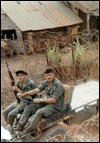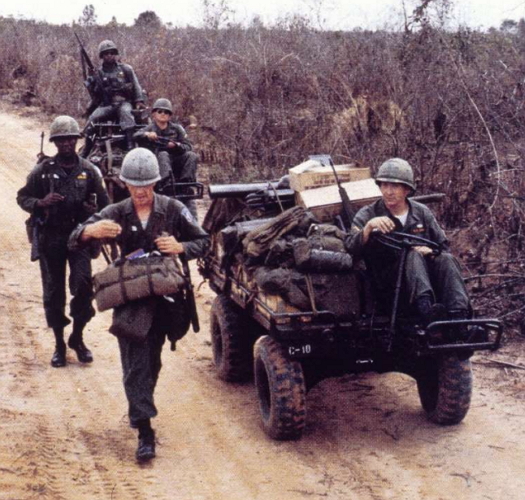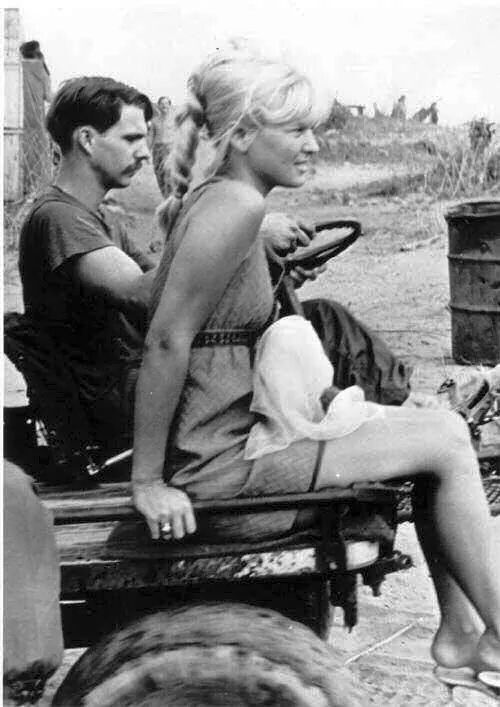The Most Popular Add-on
Electric Start, Battery, Alternator, Lights...
The Mule is a tough electrical environment. Everything is exposed to the elements: heat, humidity, cold, rain, mud, snow, dust, dirt, etc. In addition to the elements, there is no built-in way to run electrical wires without being exposed to the jaring and vibration caused with a vehicle that has no suspension. This leads to wire rubbing against metal causing chaffing of the insulation and ultimately shorts or other electrical problems.
This section is aimed at providing some hints and suggestions on how to build a reliable electrical system and minimize electrical problems in the Mule environment.
Cover The Wires
All wires should be enclosed in some type of covering. I use anything from 1/4" fuel line for single wires up to 5/8" heater hose for running multiple wires together. Hose not only protects the wires from rubbing, being poked with underbrush and other physical hazzards, it also protects the wire from many of the environmental conditions. Split tubing is another option but does not provide the same level of protection as hose. The one place I do use split loom is on the 4 gage battery wire to protect it.
Another advantage of covering the wires is organization. Instead of having wires strung helter skelter underneath the deck, it forces you to plan a little better.
Di-Electric Grease
Use di-electric grease on all terminals, both bolt on and slip on. It helps prevent corrosion, protects the metal parts and ensures a better electrical connection in the Mule environment. It should be used on the following:
- Starter Connections ( both the battery wire bolt and the push on starter wire)
- Battery Terminals
- Alternator Wire connector on the back of the alternator
- Starter Switch lugs and connector
- Fuses
- Bullet and Spade connectors
Batteries
How much battery do you really need to start a 14 HP engine or run a few lights? I find the group 78 batteries a lot of people are using overkill. Yes, I know it has side mounted terminals but it is also large, heavy and expensive.
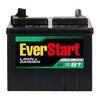
Electrically, a small tractor battery is sufficient for electric start and a few lights. The EverStart U1P-7 from Wal-Mart is cheap and has plenty of cold crank amps.
A group 26 size battery seems a better fit if you have higher electrical needs. It is smaller and lighter than a group 78 battery with plenty of amp hours.
Wire Types
 Several wire types are available for wiring the Mule. Below are the 3 major types used
and the description of each that would be the most suitable for a Mule environment. I recommend the SXL wire type.
Several wire types are available for wiring the Mule. Below are the 3 major types used
and the description of each that would be the most suitable for a Mule environment. I recommend the SXL wire type.
GPT or Primary Wire
This is the most common wire you find at auto stores. As its name implies, it is a good general purpose automotive wire. It features a multi stranded core and flexible insulation making it ideal for pulling through tight spaces. It is usually rated to 80°C (176°F). Although some is also rated to 105°C (221°F). It is resistant to oil, chemicals and acids.
1015, Hook-Up or Motor Wire
The biggest difference between GPT and Motor wire is that motor wire features finer strands of wire. This allows it to handle higher voltages.
Motor wire is rated at 600 Volts with a temperature rating of 105°C (221°F). It is resistant to grease, oil, acids, water, solvents, fungus.
Although most commonly used as internal wiring in appliances and HVAC equipment, motor wire is finding increasing use in automotive applications.
SXL, GXL, TXL
SXL Wire features a cross linked polyethylene jacket that can withstand higher heat, abrasion, and aging better than GPT wire. It is often the preferred choice in higher stress applications like race or industrial use vehicles. If you are looking for extra durability, this is a good choice.
The main difference between the XL types is insulation wall thickness. SXL is standard thickness, GXL is thin wall, and TXL is extra-thin wall.
Connectors
I use a variety of connectors depending on the purpose.
Anderson SB120

I use Anderson SB120 connectors for all my battery cable connectors. The reason I use this size is for 2 reasons, 1) it is the smallest quick connect that supports 4 gage wire which is what I use between the battery and starter, and 2) it is large enough to accept trickle charger clips without having to get to the battery.
I order the cover for each connector and one handle per pair. I mount one of the connectors under the mule and can easily plug or unplug the battery. The best place I have found to order these from is Powerwerx.
Powerpost
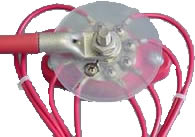
A powerpost mounted near the battery is not only a safety item but also a convienent point to add extra circuts. Connect the Alternator wire, Starter and Battery cables to the center post. Then connect other circuits to the screws surrounding the center post. It is a good point to add fuse holders and fuseable links, that way keeping everything centralized with only one place to check voltages.
Heat Shrink Terminals
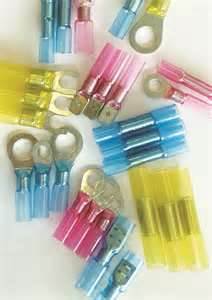
Heat Shrink Terminals provide 2 wiring benenfits. One is they strengthen the connection which is very important on a vehicle that bumps and jars and two, they protect the electrical connection from the environment. Both of these attributes are important in maintaining electrical reliability for a vehicle exposed to rough terrain and various weather conditions.
Polarized Connector
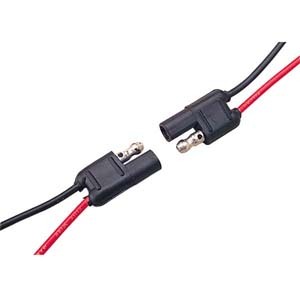
Another connector I use is the 2 wire polarized connector. These are similar to 4 wire trailer connectors. I put them on lights, horns, sprayers, etc. It makes changing broken or other non-working components easier. It also allows for interconnectivity and quick change of multiple accessory types.
Circuit Protection
This is one area that cannot be overlooked. Every circuit must be protected by either a fuse or a fuseable link. These critical items will protect the wiring, alternator and battery.
ATC Fuse Holder

The ATC style fuse is the most popular size and vary in ratings from 3 amp to 30 amp. These fuse holders come in multiple wire sizes and are weather proof making them a good choice for the Mule. Fuses should be placed as close to the battery as possible and if you use the Powerpost, can be directly mounted to one of the screws.
Fusible Links
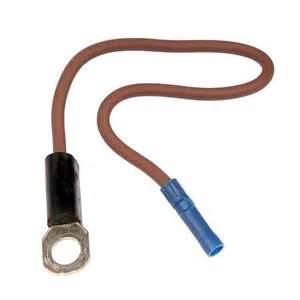
Fusible links come in a variety of forms. They are more tolerant to momentary overloads. Car manufactures use them in alternator charging circuits due to that property. If you have installed an alternator, you should at a minimum install a 30 amp fuse. A better solution is to install a fusible link. I use a 9" piece of 14 gage fusible wire. I put bullet connectors on each end for easy replacement and keep a couple of spares handy.
Heat Shrink Tubing
Heat shrink tubing provides 2 benefits. One is it strengthens connections between wires and connectors. Two is it provides protection against the environment. Heat shrink tubing should be used in 2 places.
Battery Wire Terminals
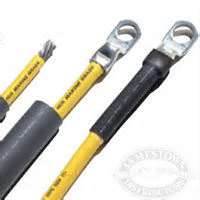
Heat Shrink Tubing on battery cable connectors is really more of a safety issue on the Mule. Batterys and Starters are in tight spaces surrounded by metal. Cover as must of the terminals as possible to reduce the chance of shorts. You can add heat shrink tubing to store bought battery cables if you don't make your own. Use double wall heat shrink tubing with adhesive.
End of Hose
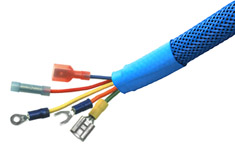
Heat Shrink Tubing on the ends of a hose used to protect wires provides protection against the end of hose rubbing the wires insulation and helps keep water and dirt out of the hose itself. It is easily removed if another wire needs to be added inside the hose. As you can see from the picture, different types of terminal connections are used for easy removal.
Securing Wiring
Protecting wiring from sagging, rubbing, getting caught by underbrush, etc. is a vital piece in having a reliable, maintenance free electrical system. There are several ways to secure and protect your wiring and here are a couple I use.
Loom Clamp

The existing kill switch wiring is held in place by these. They are probably the best at holding wires or hose in place but require drilling under the Mule deck and screwing in place. I use these only on wiring that goes across the mule as I don't like to drill holes in the Mule.
Ty-Raps / Cable Ties

(2-Piece Type) Weather-Resistant / Heat-Resistant Type
Not all Ty-Raps are created equal. Many are plastic 1-piece that do not hold up well in
a rough outdoor environment. 2-piece ties have metal clips that won't break off as the
plastic deterioriates and are usually UV, heat and weather resistant. Ty-Raps are great
for organizing and bundling wires to keep them neat and secure.
Armored Cable Hanger Clips
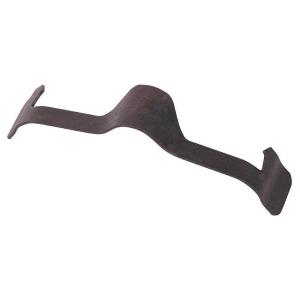
These galvanized spring steel clips fit fairly well between the rails underneath the Mule deck. Use them to hold cables up that run front to back. They are strong and the best way to install/remove them is to put them in long ways and spin them in place. These can be found at your local Big Box hardware stores in packs of 10. Their official name is "Steel City Superstrut Silver Galvanized Armored Cable Hanger Clips".
Grounding - The final piece

Nothing is more frustrating than troubleshooting an electrical problem only to find a bad ground. Bad grounds can result in intermittent connectivity or no connectivity at all. There are a lot of grounding points on a Mule. Every bolt and nut is a possible ground point. All ground connections follow all the same advice given above.
- Remove any grease, grime and paint from the ground point.
- Use Di-Electric Grease on all.
- Use ring connectors with heat shrink sleeves on the wires to connect them under the bolt or nut.
